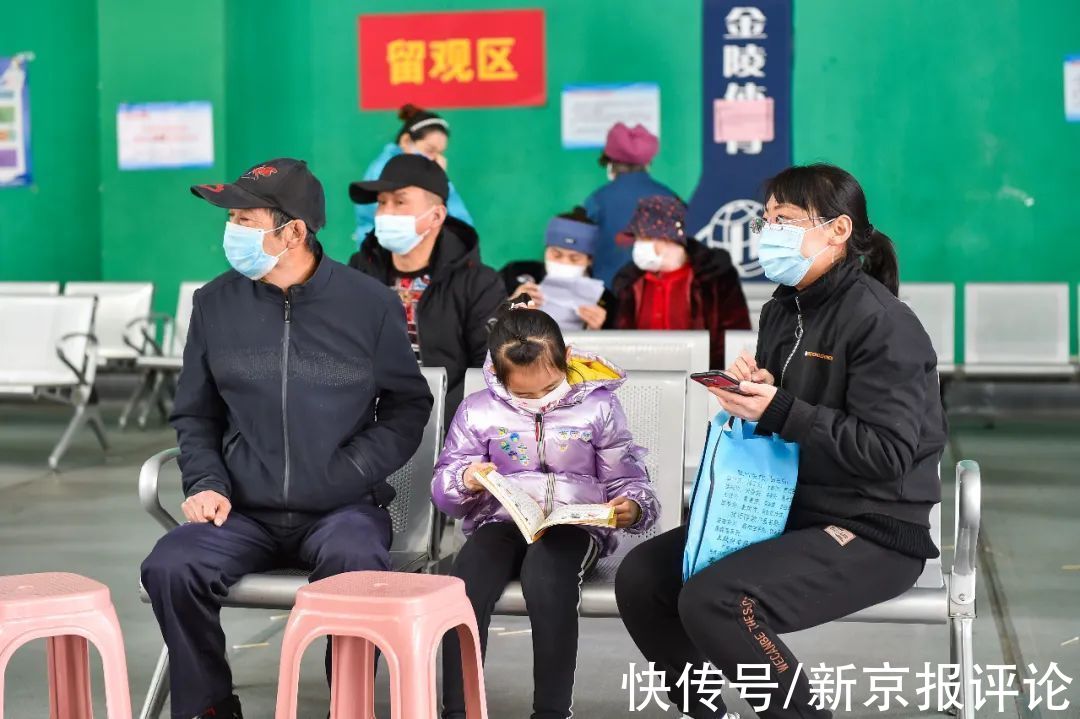
The epidemic situation is complex, and widespread vaccination is still one of our most powerful “weapons” to deal with the challenge of the epidemic at this moment.

On March 22, an elderly man is vaccinated at the new crown vaccination site in Gongzhufu Park, Hohhot, Inner Mongolia. Photo/Xinhua News Agency
Beijing News editorial
On April 5, the China Centers for Disease Control and Prevention released the “Q&A on New Crown Vaccination for the Elderly”. In view of the fact that the vaccination rate of the new coronavirus among the elderly in some parts of my country is still relatively low, experts from the Chinese Center for Disease Control and Prevention suggest: For the elderly who have not been vaccinated or have not received the “booster shot”, if there is no absolute contraindication to the vaccine , it is recommended to take the initiative to vaccinate as soon as possible.
With the development of the epidemic to this day, the relevant scientific knowledge has been clear, and the necessity and effectiveness of vaccination for the elderly are beyond doubt. Existing evidence has shown that elderly people with low immunity are a high-risk group of new coronary pneumonia and need more focused protection. Vaccines are one of the most effective ways.
Experts from the Chinese Center for Disease Control and Prevention said that the risk of severe illness and death caused by the new coronavirus infection can be reduced by more than 90% for the elderly after the booster vaccination. This protective effect means that society should create conditions for the elderly to be vaccinated, which is responsible for the health of the elderly group.
At the same time, the promotion of “all available” vaccines against the new crown for the elderly is also to better serve the overall situation of the fight against the epidemic. The virus has undergone several rounds of mutation, and its infectivity has increased significantly. Recently, the epidemic caused by Omicron has appeared in many places, and the rebound of the epidemic has been obvious, which highlights the need for us to further promote vaccination and improve the Great Wall of Immunization. Against this background, the vaccination rate of the elderly has increasingly become the key to whether the epidemic can be safely controlled. It is necessary to prevent the elderly from becoming a weak link in vaccination.
Of course, it is also important to see that vaccination of the elderly also faces some special problems. For example, the elderly have more underlying diseases and weaker physique, and they are worried about adverse reactions after vaccination; some elderly people do not know enough; some people think that long-term stay at home or living in remote areas, rarely going out or going to other places, the risk of infection is very high Small, do not need to be vaccinated.
For these issues, the society should also face up to it. Relevant units should try their best to eliminate the concerns of the elderly, do a good job in screening the underlying diseases of the elderly, and clarify relevant taboos, so that the elderly can have a better mind when vaccinating, improve the overall willingness of the elderly to be vaccinated, and guide them to be more active in vaccination. .

The citizens who have been vaccinated wait in the observation area. Figure / Xinhua News Agency
As for the unscientific understanding of the elderly, relevant units should also do a good job of explaining and disseminating knowledge.
Some elderly people think that they don’t need to be vaccinated “without going out”, this kind of thinking should be corrected as soon as possible. After all, the frequency and breadth of social mobility means that this method of fighting the epidemic simply through “self-discipline” is unreliable, and the elderly need a comprehensive and scientific understanding of the role of vaccines. This kind of meticulous popular science work also tests the work patience and methods of the relevant units.
In addition, many elderly people live in remote and rural areas and often have difficulty accessing adequate medical resources. These should also be important considerations. Relevant departments should find ways to get the vaccine to the grassroots level and into the mountainous areas to ensure that the elderly in these places have the same opportunity to be exposed to the vaccine.
This also means that the relevant work must be considered comprehensively. Vaccination cannot only focus on cities, and the elderly in a wider area must also be included in the field of vision in time.
Actually, my country’s current vaccinations are on a fairly large scale. According to the National Health Commission, as of April 5, more than 1.24 billion people across the country have been vaccinated against COVID-19, with people over 60 years old. There are also 210 million elderly people who have completed the full course of vaccination. Considering the size of my country’s population, it is not easy to achieve such a number of vaccinations.
At the same time, we can also see that the epidemic is still repeated, and the anti-epidemic situation is still complicated. We must not be careless and slack. Widespread vaccination remains one of our most powerful “weapons” to tackle the challenge of the pandemic at this moment.
Therefore, the whole society should gather strength to solve practical problems and increase the vaccination rate on the existing basis. In particular, it is necessary to develop ideas and innovate service models, so as to achieve “all-in-one access” to the new crown vaccine for the elderly, and to build a more complete, sturdy, and dead-end epidemic prevention system, and strive to achieve the final victory in the fight against the epidemic as soon as possible.
Editing|Ma Xiaolong
Proofreading|Liu Yue